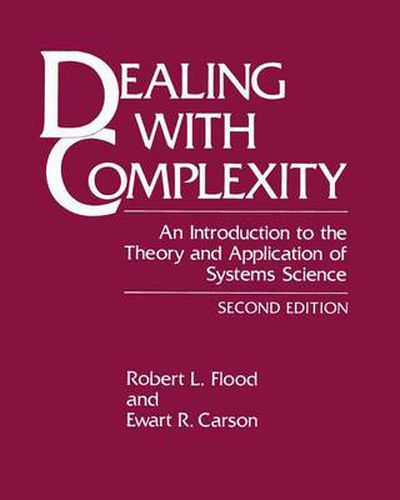Readings Newsletter
Become a Readings Member to make your shopping experience even easier.
Sign in or sign up for free!
You’re not far away from qualifying for FREE standard shipping within Australia
You’ve qualified for FREE standard shipping within Australia
The cart is loading…






This title is printed to order. This book may have been self-published. If so, we cannot guarantee the quality of the content. In the main most books will have gone through the editing process however some may not. We therefore suggest that you be aware of this before ordering this book. If in doubt check either the author or publisher’s details as we are unable to accept any returns unless they are faulty. Please contact us if you have any questions.
Contents 11. 2. 2. Four Main Areas of Dispute 247 11. 2. 3. Summary … 248 11. 3. Making Sense of the Issues . . 248 11. 3. 1. Introduction … . 248 11. 3. 2. The Scientific Approach 248 11. 3. 3. Science and Matters of Society . 249 11. 3. 4. Summary . 251 11. 4. Tying It All Together … . 251 11. 4. 1. Introduction … . 251 11. 4. 2. A Unifying Framework 251 11. 4. 3. Critical Systems Thinking 253 11. 4. 4. Summary 254 11. 5. Conclusion 254 Questions … 255 REFERENCES … … … … … … . 257 INDEX … … … … … … … . 267 Chapter One SYSTEMS Origin and Evolution, Terms and Concepts 1. 1. INTRODUCTION We start this book with Theme A (see Figure P. I in the Preface), which aims to develop an essential and fundamental understanding of systems science. So, what is systems science? When asked to explain what systems science is all about, many systems scientists are confronted with a rather daunting task. The discipline tends to be presented and understood in a fragmented way and very few people hold an overview understanding of the subject matter, while also having sufficient in-depth competence in many and broad-ranging subject areas where the ideas are used. Indeed, it was precisely this difficulty that identified the need for a comprehensive well-documented account such as is presented here in Dealing with Complexity.
$9.00 standard shipping within Australia
FREE standard shipping within Australia for orders over $100.00
Express & International shipping calculated at checkout
This title is printed to order. This book may have been self-published. If so, we cannot guarantee the quality of the content. In the main most books will have gone through the editing process however some may not. We therefore suggest that you be aware of this before ordering this book. If in doubt check either the author or publisher’s details as we are unable to accept any returns unless they are faulty. Please contact us if you have any questions.
Contents 11. 2. 2. Four Main Areas of Dispute 247 11. 2. 3. Summary … 248 11. 3. Making Sense of the Issues . . 248 11. 3. 1. Introduction … . 248 11. 3. 2. The Scientific Approach 248 11. 3. 3. Science and Matters of Society . 249 11. 3. 4. Summary . 251 11. 4. Tying It All Together … . 251 11. 4. 1. Introduction … . 251 11. 4. 2. A Unifying Framework 251 11. 4. 3. Critical Systems Thinking 253 11. 4. 4. Summary 254 11. 5. Conclusion 254 Questions … 255 REFERENCES … … … … … … . 257 INDEX … … … … … … … . 267 Chapter One SYSTEMS Origin and Evolution, Terms and Concepts 1. 1. INTRODUCTION We start this book with Theme A (see Figure P. I in the Preface), which aims to develop an essential and fundamental understanding of systems science. So, what is systems science? When asked to explain what systems science is all about, many systems scientists are confronted with a rather daunting task. The discipline tends to be presented and understood in a fragmented way and very few people hold an overview understanding of the subject matter, while also having sufficient in-depth competence in many and broad-ranging subject areas where the ideas are used. Indeed, it was precisely this difficulty that identified the need for a comprehensive well-documented account such as is presented here in Dealing with Complexity.